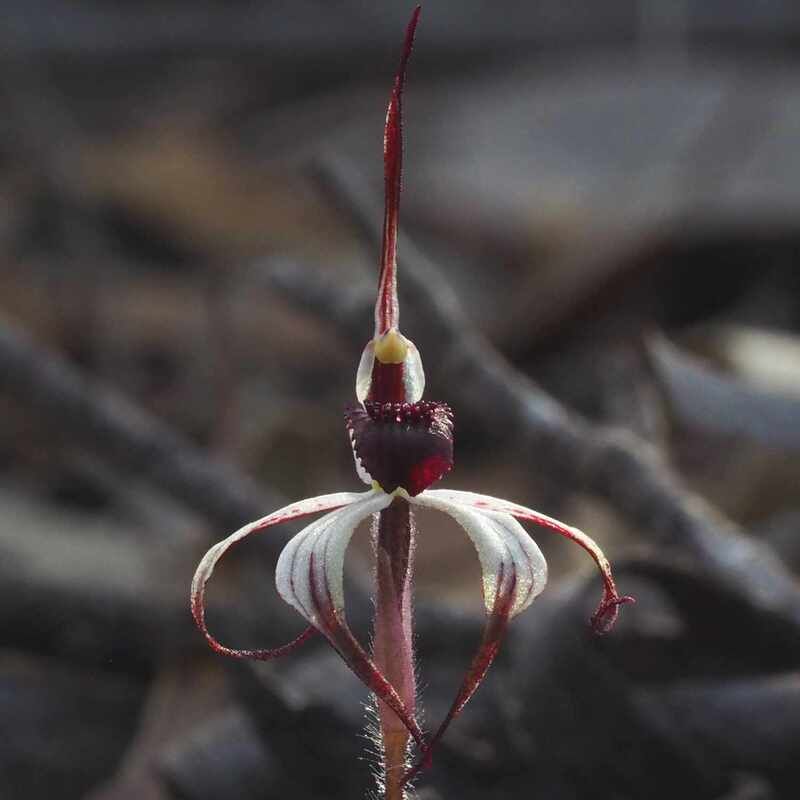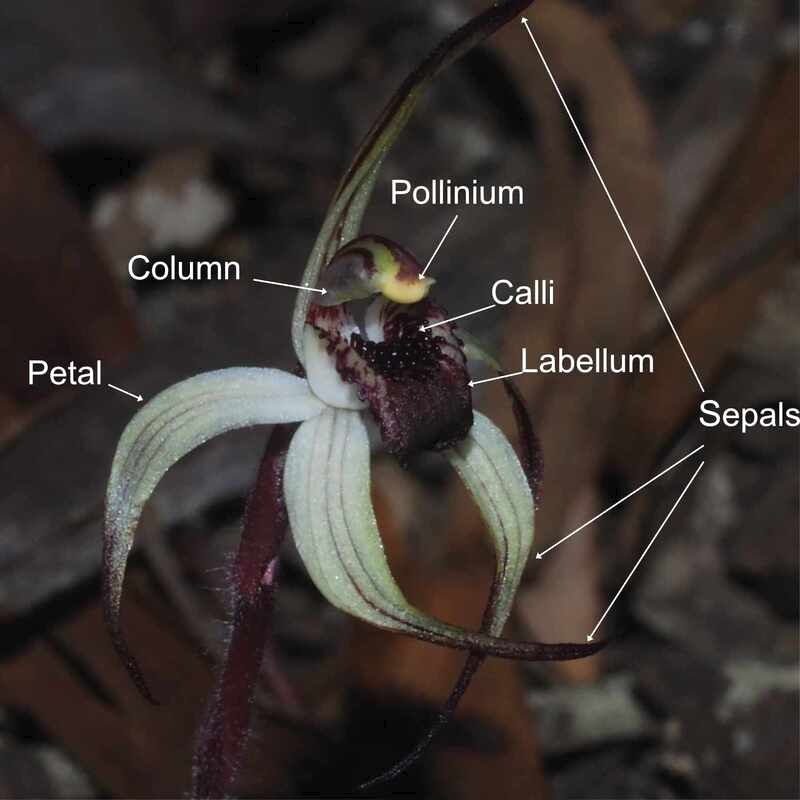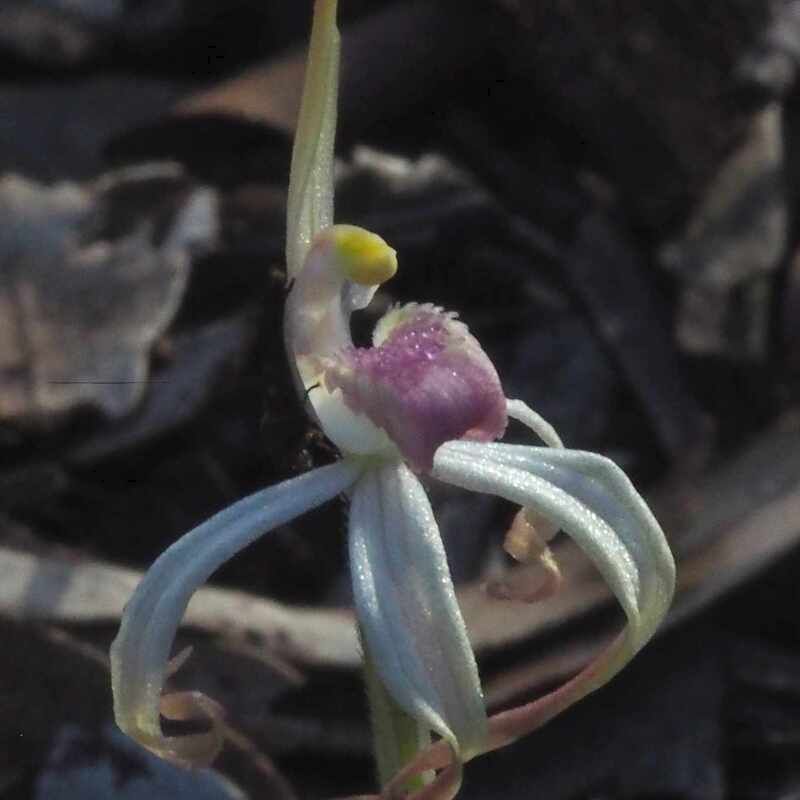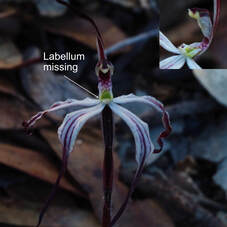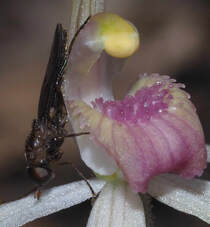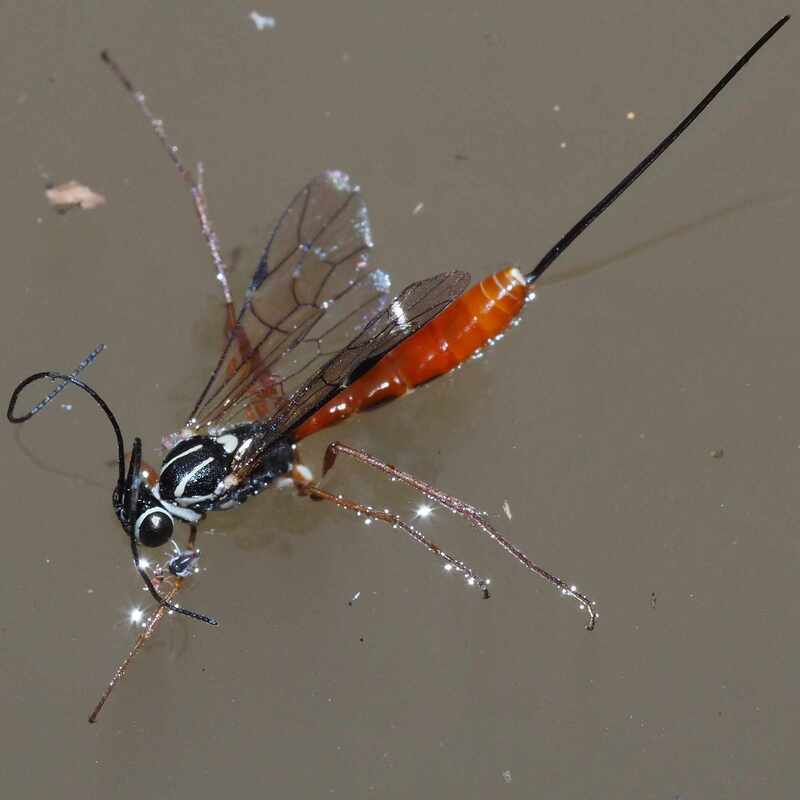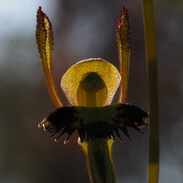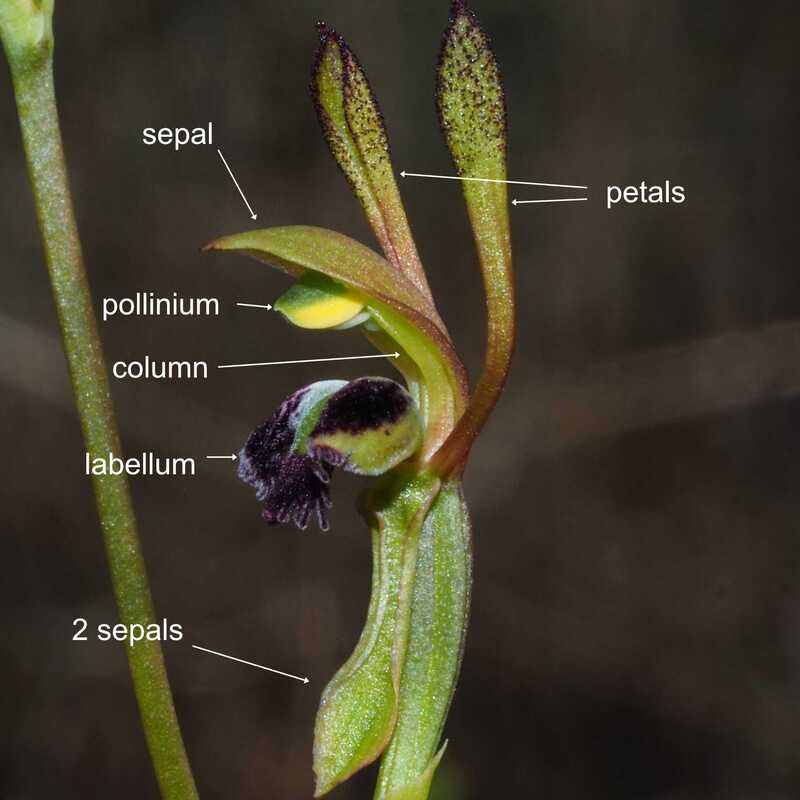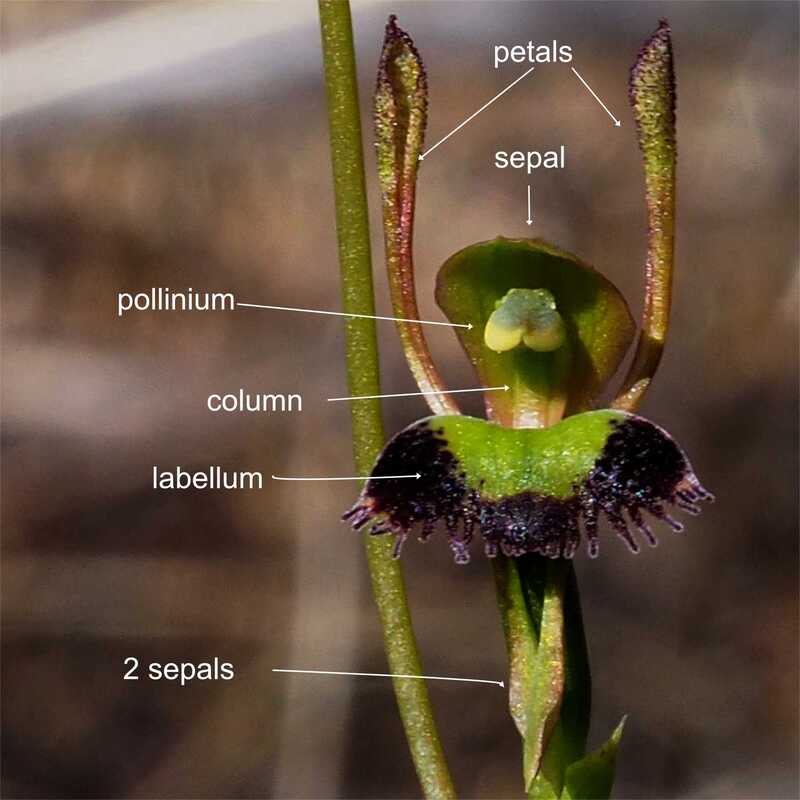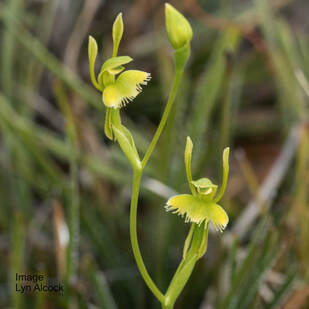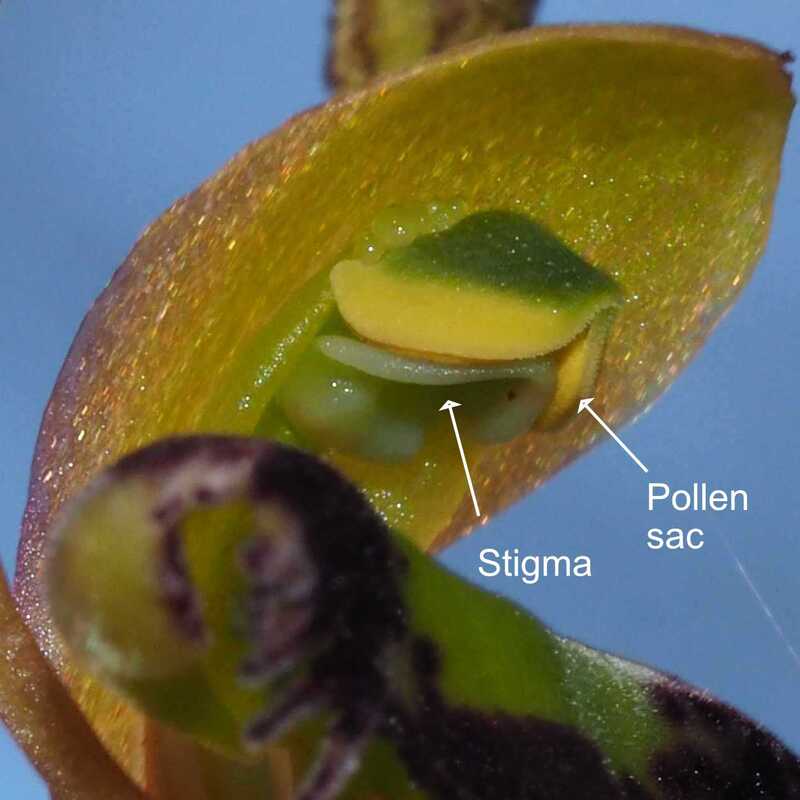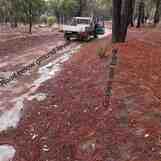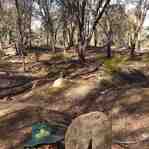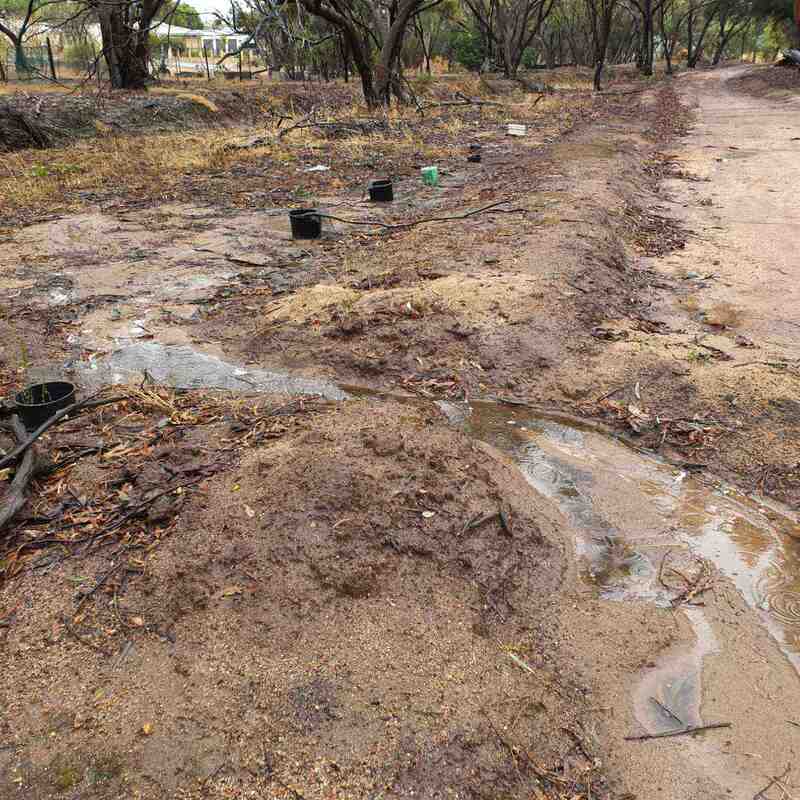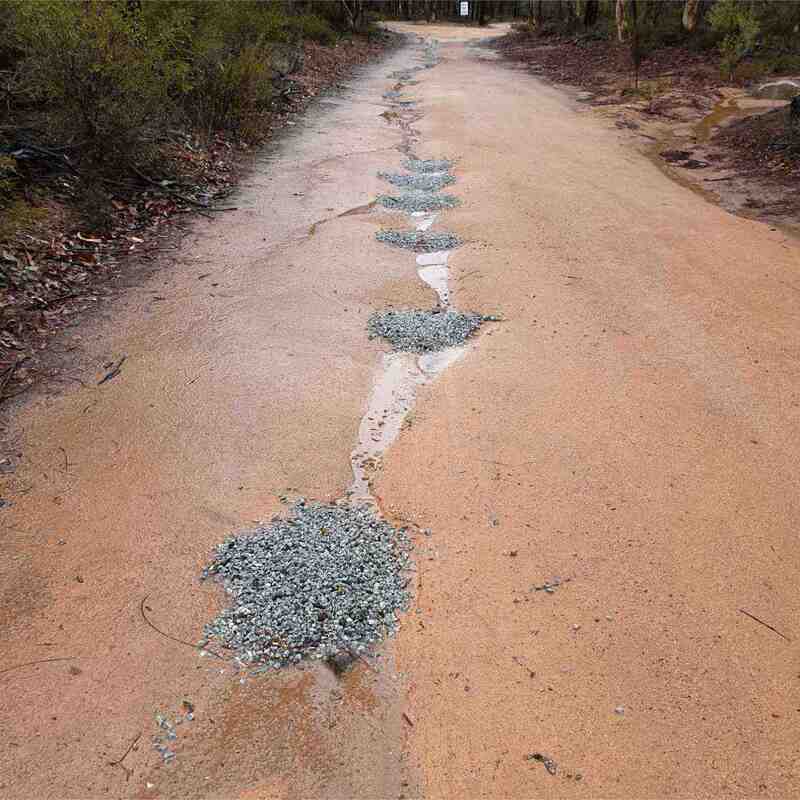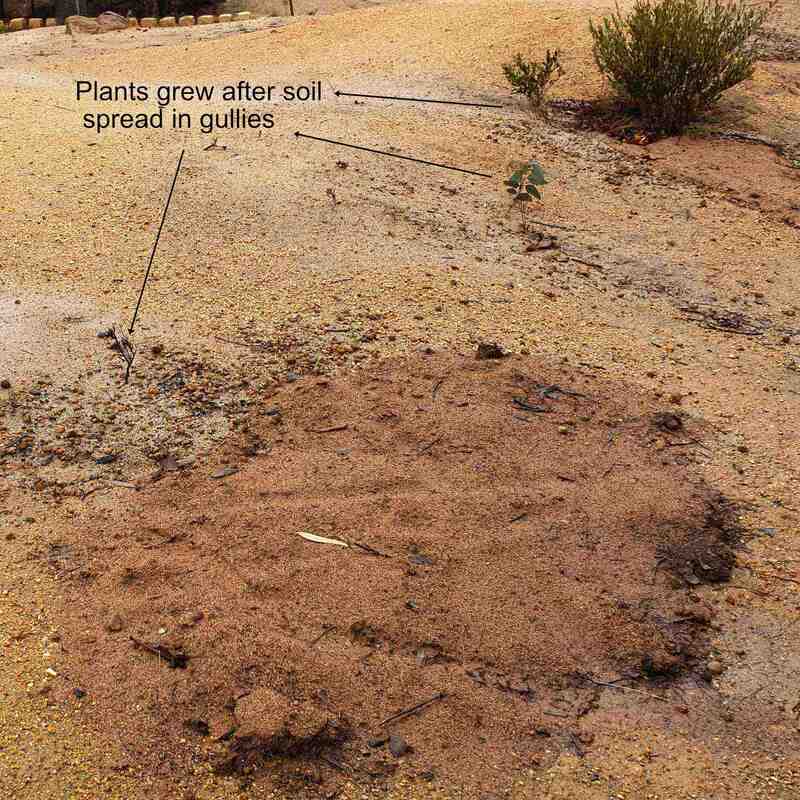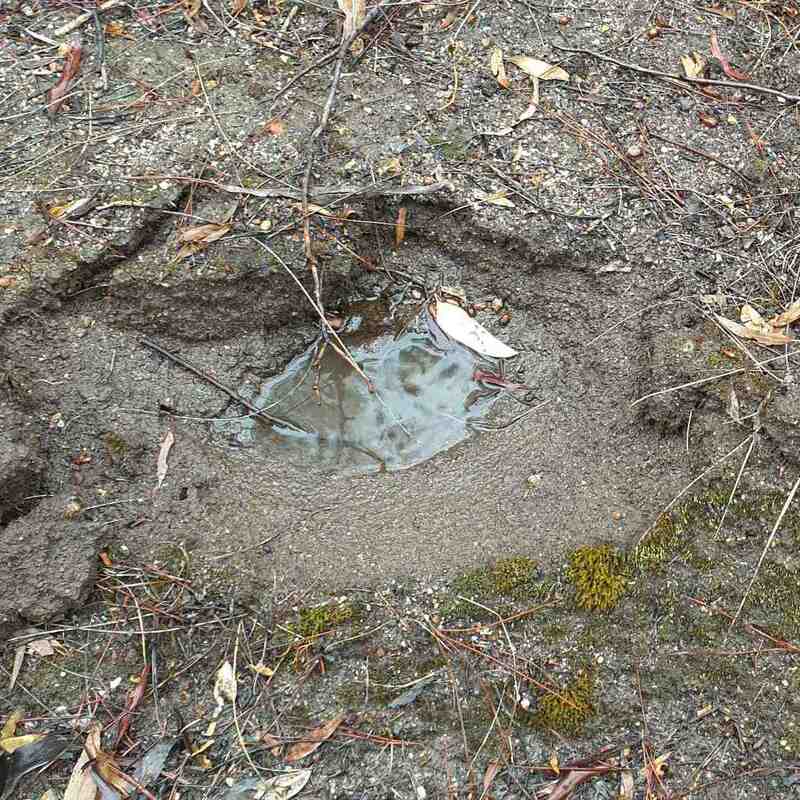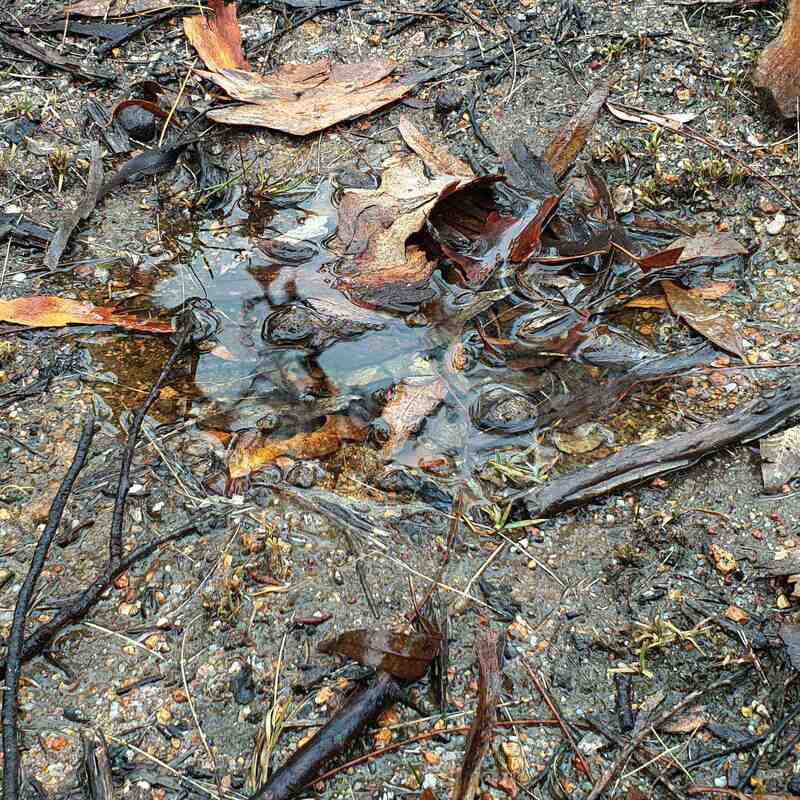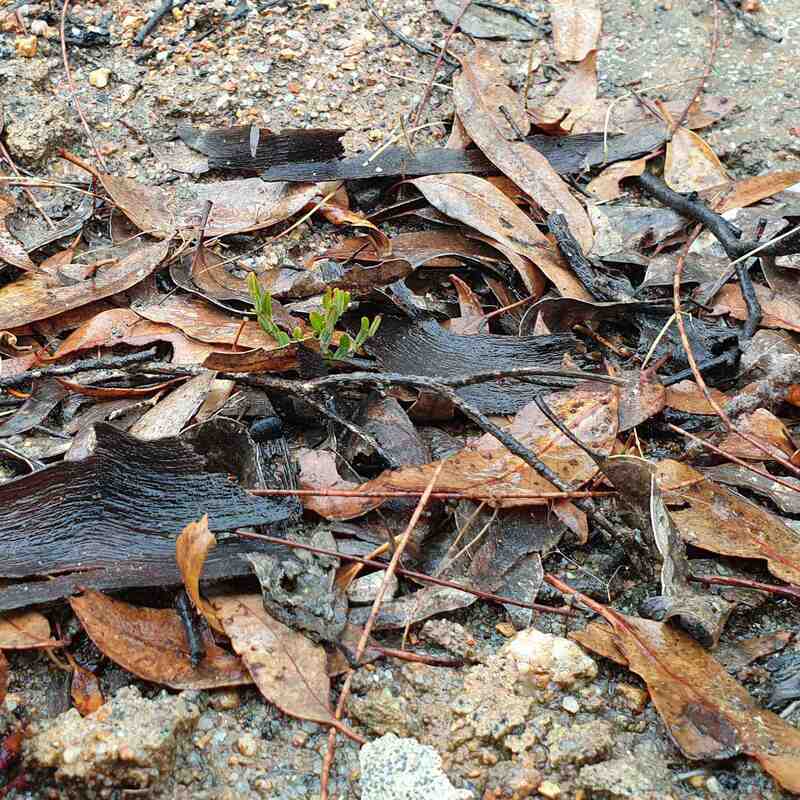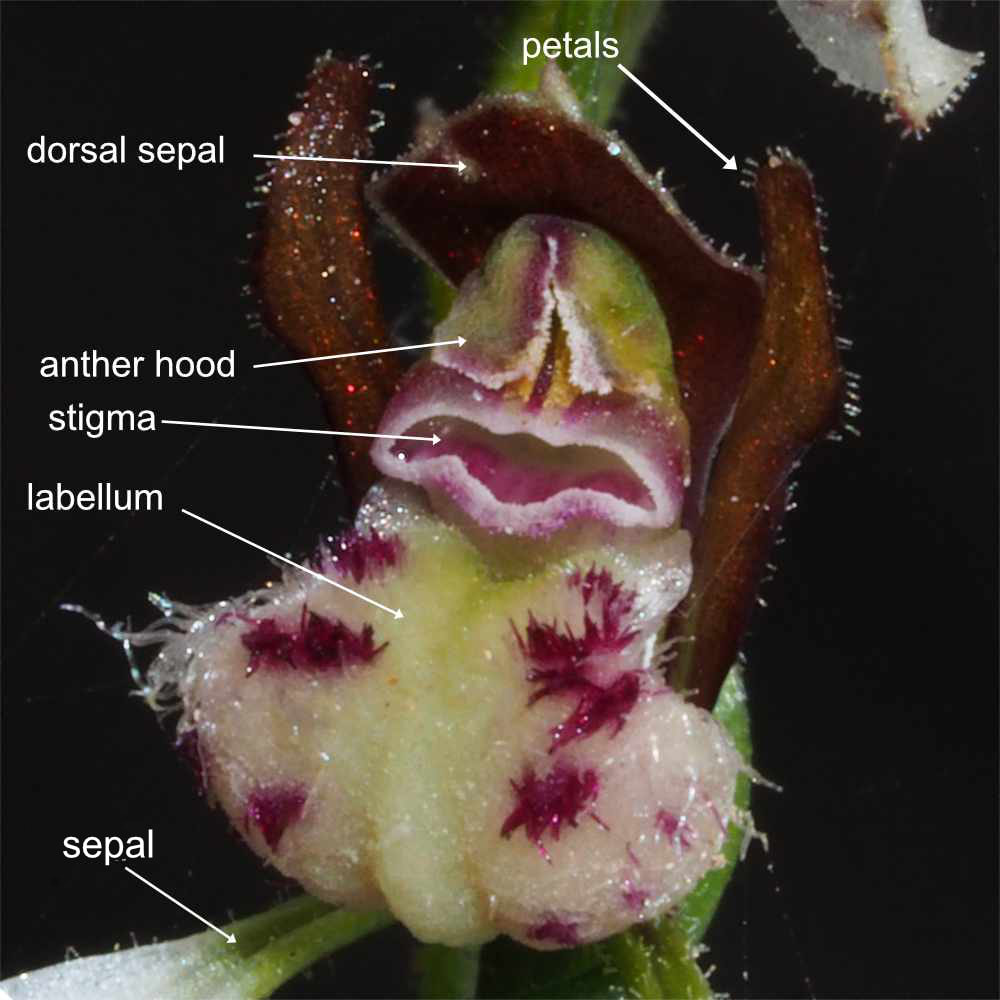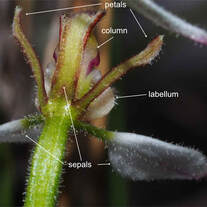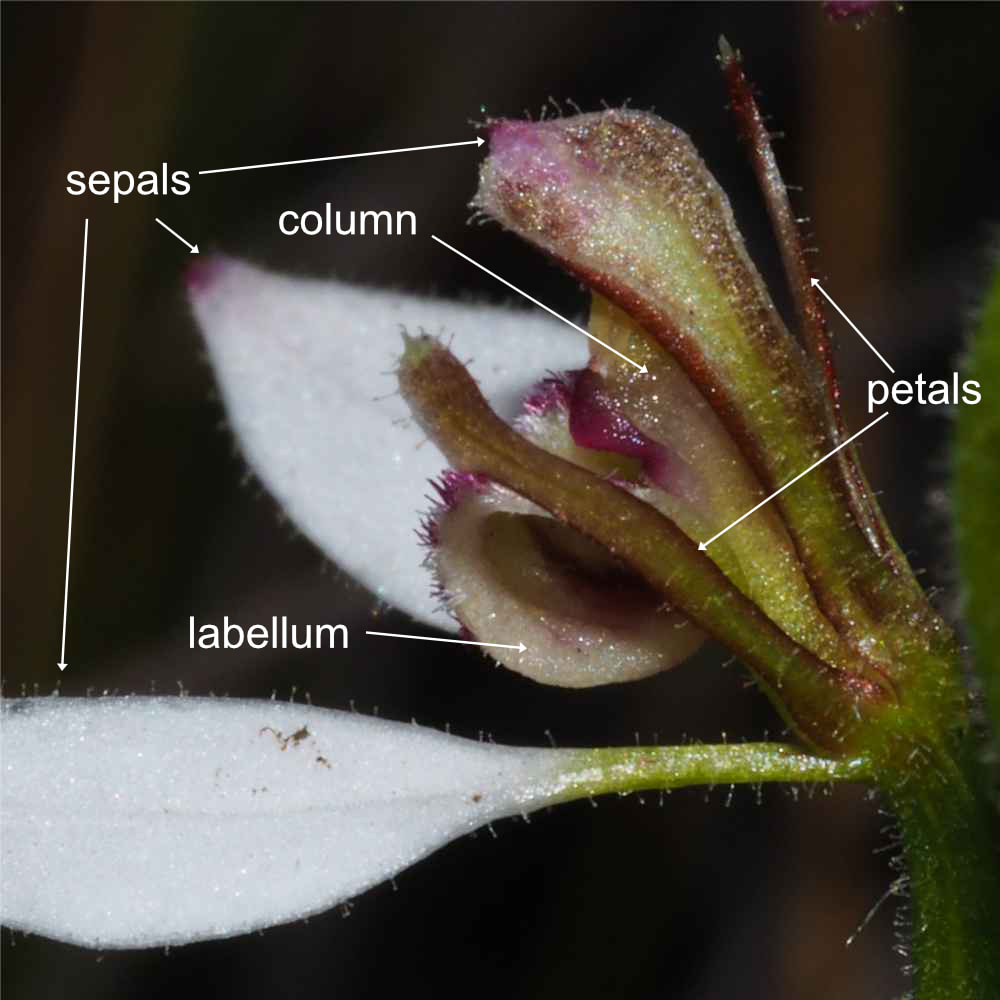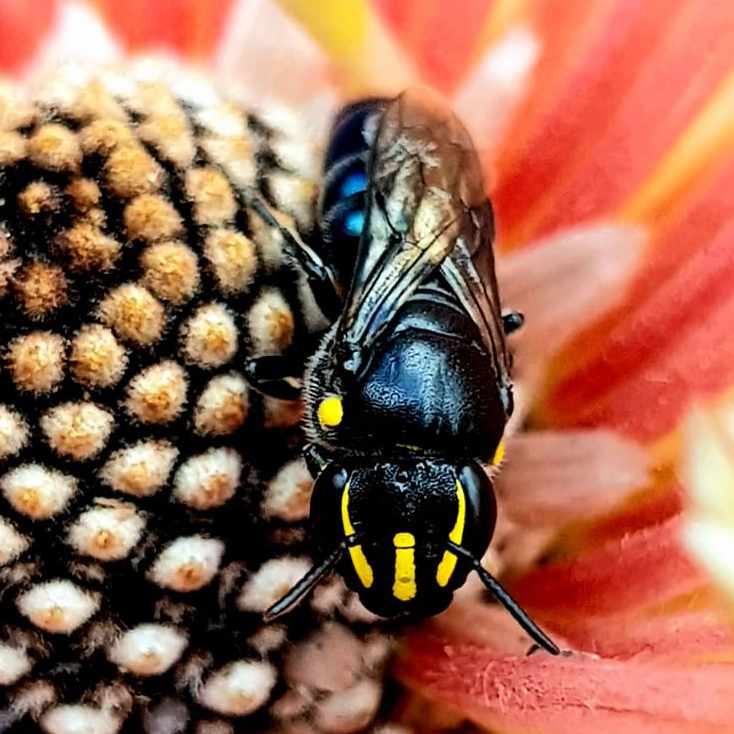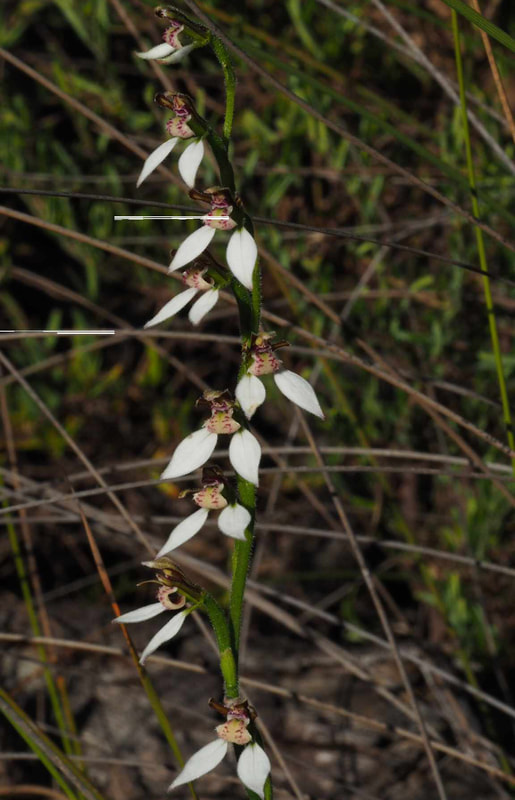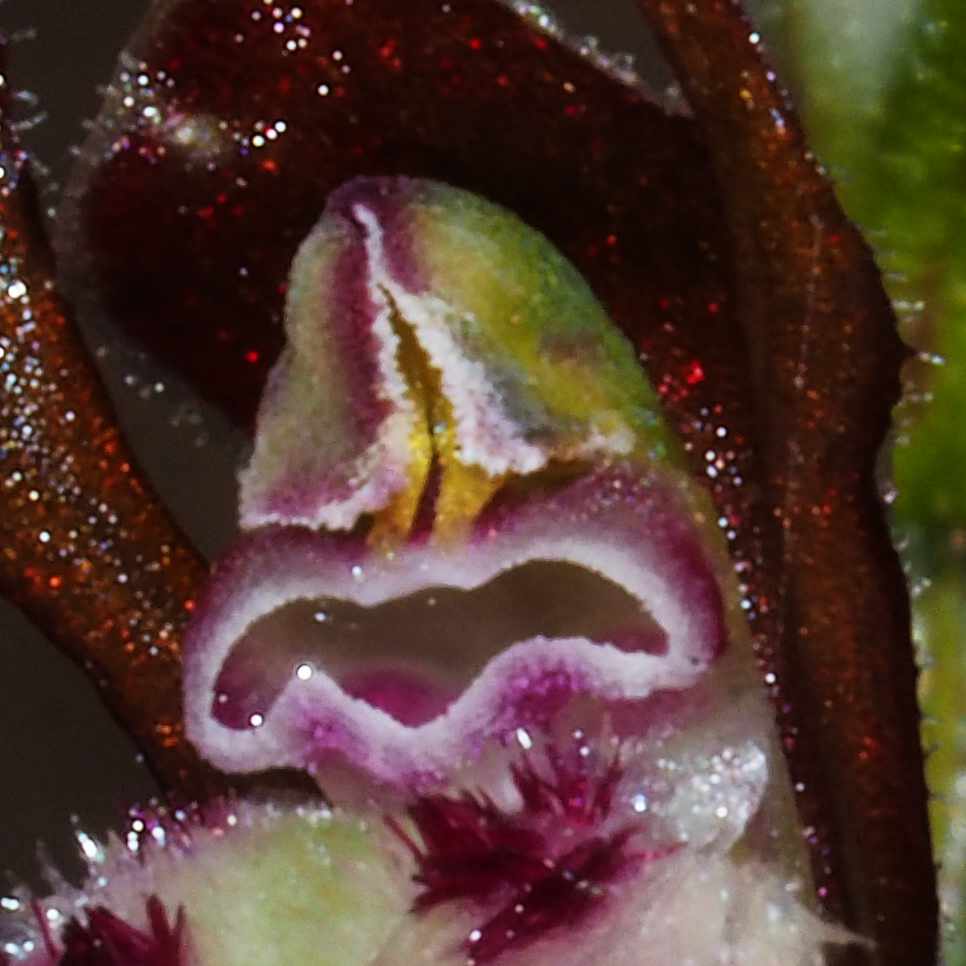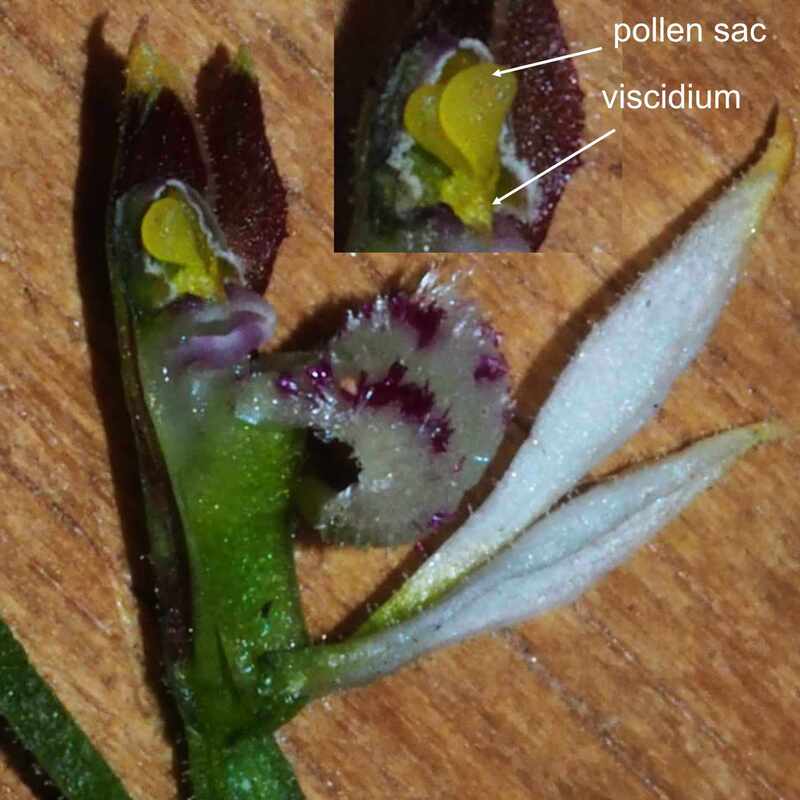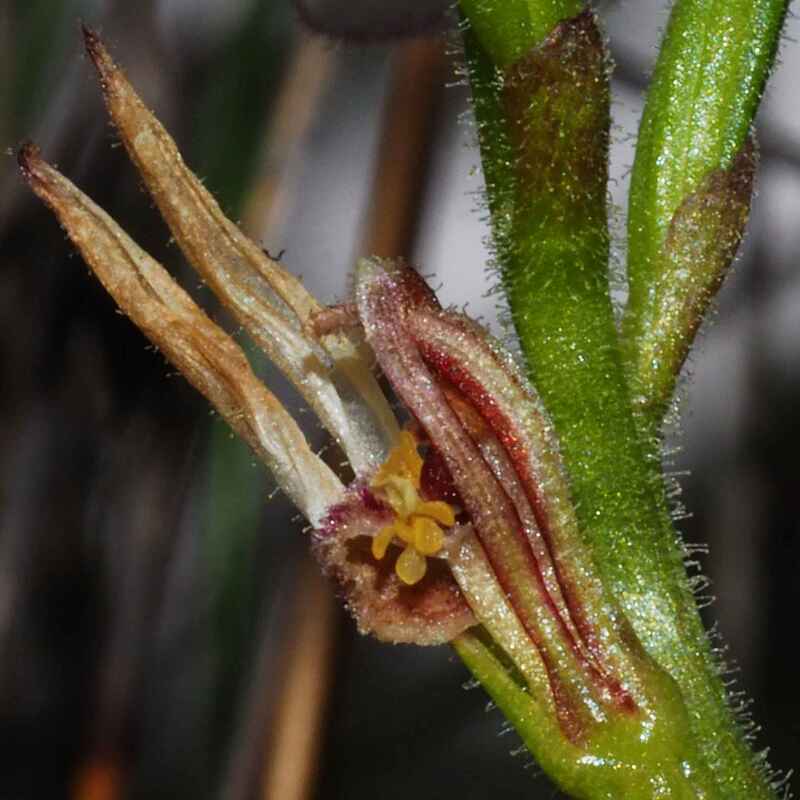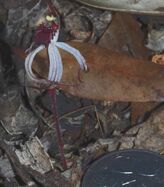 Tiny but exquisite
Tiny but exquisite Caladenia drummondii, the winter spider orchid is an enigmatic and beautiful orchid, which I was privileged to see east of Narrogin last week. Unfortunately the spot remains secret because they are uncommon, and someone had already dug up a plant there.
The location had leaf and bark litter on a loamy gravel slope of Eucalyptus neutra (Newdegate mallee) . Flowers are tiny and exquisite, but so well camouflaged that it is very easy to walk over them without noticing. There were a couple of white variants as well.
The winter spider orchid intrigues me. It is the earliest flowering spider orchid, which flowers in unforgiving terrain at a risky time of the year, when rainfall is variable and there are few pollinators or other flowers.
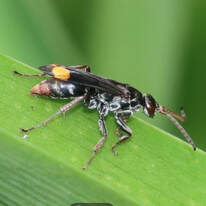 Calompilus flower wasp
Calompilus flower wasp They observed only males, which approached the flowers in a mating pattern. This suggests that it is being attracted to the orchid by a pheromone.
Adult flower wasps feed on flower nectar, which poses a problem for their survival in late autumn. Researchers found that the winter spider orchid labellum has a higher sugar content, and the calli are sticky. This is another attractant for the wasps, which can lop the labellum. In the two years studied, only 2% and 10% of the orchids produced seed.
I found a soldier fly on one orchid, which was loathe to leave it despite gentle poking. I doubt that it is a pollinator, because the flies don't eat much and their maggots are decomposers (probably dung because their numbers peak from may to July).
I was surprised to also see an ichneumon wasp nearby (subfamily Banchinae). The long ovipositor is for parasitising moth larvae in wood burrows.
